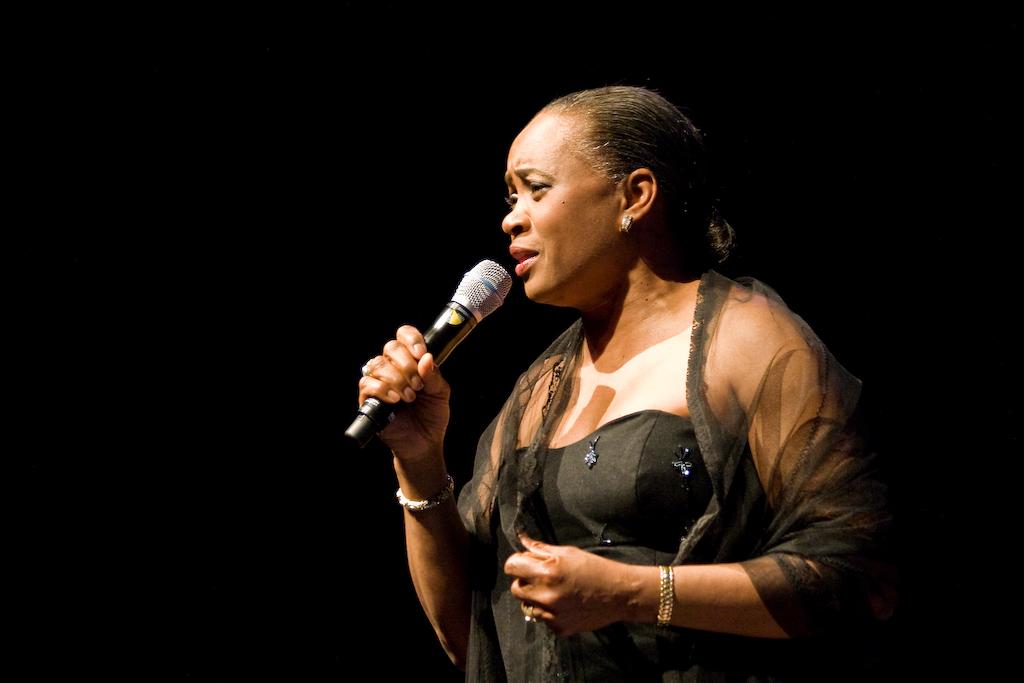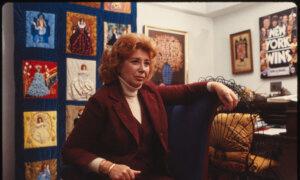What is the probability that a little black girl singing in her father’s church in 1950s Arkansas would someday sing opera on the greatest stages on the planet? And yet some 15 years later the Metropolitan Opera rang with the sound of her voice.
This statement from Barbara Hendricks’s memoir “Lifting My Voice” might be the best description of the lyric soprano’s life: “The mathematician in me is very attracted to string theory, sometimes called the theory of everything. It implies that all matter can be reduced down to a string that oscillates. I like to think that there was one original chord that was dispersed by a big bang into a multitude of smaller chords that are continually searching for their source, for their truth.”
After her 1948 birth at her maternal grandparents’ farm in rural Arkansas, the spectacular trajectory of Ms. Hendricks’s life split into many, varied performances of music all over the globe.

“As soon as [she] was able to make an intelligible sound,” the lovely soprano with a dazzling smile began to sing Negro spirituals in the Colored Methodist Episcopal Church, where her father was pastor. His sometimes severe demeanor was a challenge for his independent, strong-willed daughter, but it also acquainted her with a rebellious element in her personality. Throughout Ms. Hendricks’s career, this early practice at navigating opposing forces would aid her ability to stand up for herself against racism, and divas such as opera star, Maria Callas.
Ms. Hendricks’s excellent grades earned her a scholarship to Lane College in Jackson, Tennessee where she hoped to major in mathematics and minor in physics. Unfortunately, there was no physics department in the all-black Methodist school that her parents chose. Fortunately, singing in the school’s outstanding choir eased the 16-year-old’s frustration that she couldn’t attend a school she wanted. Ms. Hendricks was a year ahead of her classmates all through school because she was promoted to second grade shortly after entering first.
Everything changed when Ms. Hendricks was invited to participate in a student exchange program between Lane College and the mostly white Nebraska Wesleyan University in Lincoln. She was able to take physics in such well-equipped laboratories that she said she felt like she was in a toy store.
While at Wesleyan, Ms. Hendricks won the Nebraska state auditions for the Metropolitan Opera. She didn’t advance beyond the regional finals, but fortune had other plans for her. Her slowly expanding singing career was about to accelerate because of her side job singing at the Saint Paul United Methodist Church. A church member invited her to sing for a meeting which included a member of the board of trustees of the Aspen Music Festival and School. He offered Ms. Hendricks a scholarship to the music school, and suggested that she study with Jennie Tourel. Ms. Hendricks had never heard of this famous singer who was about to change her life.
After Ms. Hendricks’s audition, mezzo-soprano Tourel said, “You have a very natural instrument and I would be happy to accept you as my student.” Tourel became Ms. Hendricks’s teacher and mentor through most of the vast variety of repertoire Ms. Hendricks would learn, including the Negro spirituals that were her foundation, as well as art songs, opera, oratorio (sacred music for orchestra and soloists), chamber music, jazz, and blues. This natural quality was refined, and became the hallmark of a sound that was always unaffected.
In general, Tourel’s vocal instruction did not focus on vocal technique, that is, breathing and refining one’s tone, but on interpretation of the music and text. Since Ms. Hendricks had a natural technique, this partnership was a good fit. Tourel told Ms. Hendricks to stay true to her natural talent. “Don’t listen too much to what is being said around you: Most of it is complete rubbish anyway.” She added, “[N]ever force your voice and respect what it can and cannot do.”
The Aspen Festival was a revelation. “I was exactly at the place I should be, doing exactly what I should be doing. … I was filled with the expectation of something that I could not even begin to imagine.” Ms. Hendricks remembered. She loved attending the Friday night concerts with the Juilliard Quartet. “My love affair with chamber music [vocal or instrumental music using a few instruments which can be performed in a small hall] began then in the chilly Aspen evenings.”
After her glorious summer in Aspen, Ms. Hendricks transferred to the University of Nebraska where she earned a Bachelor of Science degree in chemistry and mathematics. A fellow Aspen student’s family invited her to live with them. She easily assimilated into this supportive, white family and stayed till she earned her degree. A full scholarship to Juilliard followed.

European audiences were graced with many Hendricks performances, including a Mahler Second Symphony with the Vienna Philharmonic in Salzburg, and another “Marriage of Figaro” in Berlin. She moved to France in the late 1970s and filled the French countryside with her singing in cities big and small.
After Ms. Hendricks’s Metropolitan Opera debut in Strauss’s “Der Rosenkavalier,” a critic said her voice’s “stratospheric brilliance and purity came through.” A year later, she debuted at La Scala in the familiar role of Susanna in Mozart’s “The Marriage of Figaro.” She had already debuted at London’s Covent Garden and the Paris Opera. Additionally, she has sung in operas by Gounod, Handel, Tchaikovsky, Donizetti, and Verdi.
Conductor Zubin Mehta described “her most beautiful voice and stunning musicianship.” Leonard Bernstein, Herbert von Karajan, Seiji Ozawa, Carlo Maria Giulini, and Erich Leinsdorf are among the other great conductors with whom she has recorded. In addition to opera, her impressive discography includes an abundance of French and German art songs, concert repertoire, and chamber music.
She currently lives in Sweden with her husband, award winning theatrical lighting designer, Ulf Englund.





